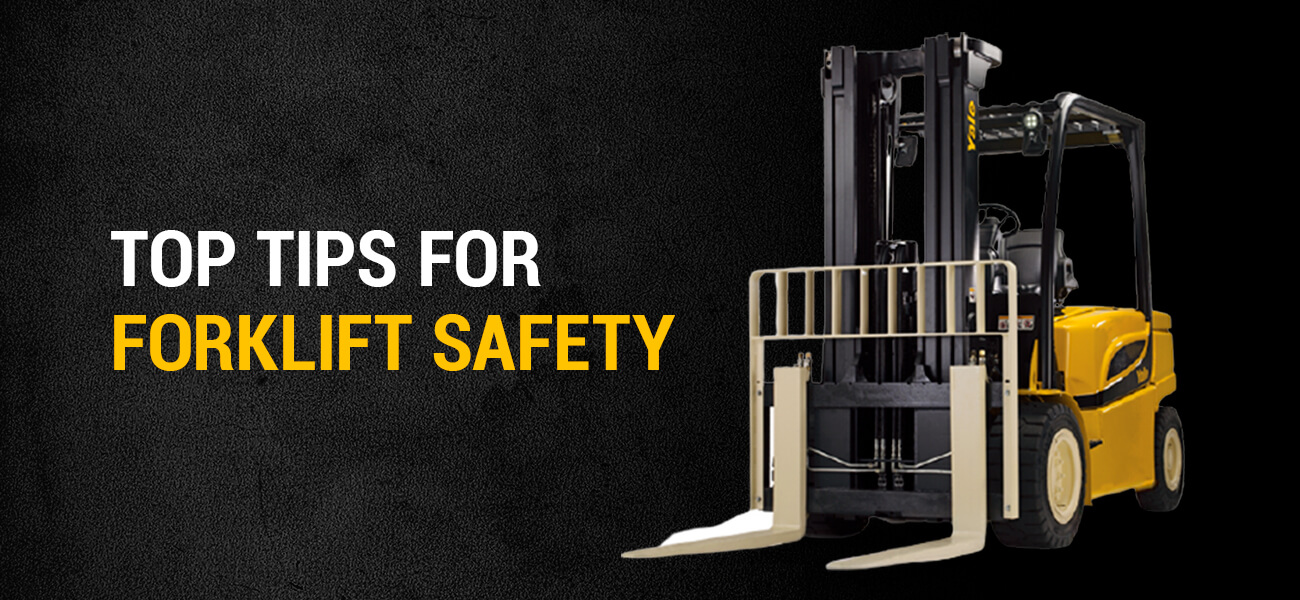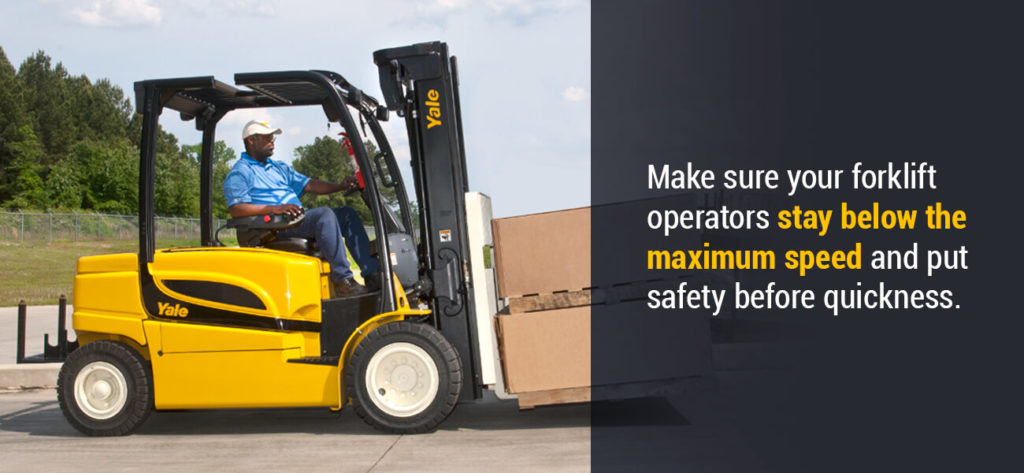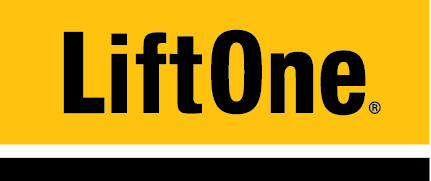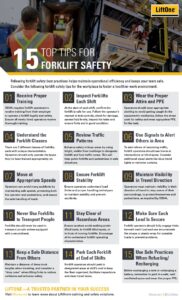
Your forklift operators are an essential part of your business, and their job comes with some risks. Without the right safety practices, your workers may suffer accidents that lead to expensive repairs and workers' compensation claims. Proper forklift safety is key to running an efficient and safe operation.
As a warehouse or distribution leader, your job is to know how to improve forklift safety for the benefit of all your workers. We've compiled a list of the 15 most important safety tips for operating forklifts. Use them to create a safer workplace where your forklift operators can feel confident around their equipment.
For your convenience, you can also download our printable version of these safety tips to share around your facility.
15 of the Top Forklift Safety Tips
Following forklift safety best practices helps maintain operational efficiency and keeps your team safe. Consider the following forklift safety tips for the workplace to foster a healthier work environment:
1. Receive Proper Training
The Occupational Safety and Health Administration (OSHA) requires your forklift operators to receive proper training via their employer to legally and safely operate a forklift. Hold or attend operator training classes to certify operators as soon as possible after they are hired. You can trust certified forklift operators to get their work done while keeping themselves, their associates and your company's product safe. Learn more about LiftOne's training programs.
2. Inspect Forklifts Each Shift
Forklift inspections should happen at the start of each shift. Using the included operator’s manual, test controls including lights, breaks, horns and steering wheels should be conducted before each shift. Look over the entire forklift for signs of damage that could signal the need for repairs. Check brake, fuel, engine, hydraulic and coolant levels. Inspect the floor and engine bay for leaks. Make sure the forks are in good condition without any signs of damage or wear. Only then can you deem a forklift safe for work.
3. Wear the Proper Attire When Operating Forklifts
You must be sure that every forklift operator is wearing the appropriate clothing and personal protective equipment (PPE) for the job. Long, loose garments or clothes with tassels or strings can get caught in the mechanics of the forklift, potentially leading to injury. If your warehouse has a uniform, be sure every employee is following it. Instruct each of your forklift operators to follow any dress code rules as these are in place for their safety.
4. Understand the Forklift Classes
There are seven classifications of forklifts, each with unique characteristics. Differences can include turning radius, capacity, power source and many other factors. An operator should only get into the operator's seat if they have been trained appropriately.
5. Review Traffic Patterns
Warehouses can be busy places with people and forklifts always traveling in different directions. Take measures to increase forklift traffic safety by applying bright, visible floor markings to the ground of your warehouse. These markings can provide specific areas for forklift and foot traffic. They can also guide forklifts in safe directions when the flow of traffic goes two ways.
6. Use Signals to Alert Others in the Area
In a busy facility, sounds can blend together. Workers may move their forklift around a corner or up or down an incline without knowing what is beyond their eyesight or earshot. People walking may also be unaware of the forklift action happening around the corner. Have operators use their horn at intersections or blind spots. If horns are not effective, consider alternatives, like blue travel lights or red zone curtains to provide a visual tool to recognize oncoming traffic.

7. Move at Appropriate Speeds
Your forklift operators can avoid countless accidents by moving at safer speeds. Chances of accidents are higher if your forklift operators are ripping around turns or moving freight at a rapid rate. Make sure your forklift operators stay below the maximum speed and put safety before quickness. Additional safety tools, like telemetry, can help assist operators in maintaining safe speeds.
8. Ensure Forklift Stability
Every forklift has a maximum load rating. Exceeding this load limit can impact the forklift's stability. Picking up packages in a haphazard or uneven way can also reduce the forward stability of a forklift. Make sure your forklift operators understand how to keep their forklifts stable as they manipulate loads through your facility.
9. Maintain Visibility in the Direction of Travel
Forklift operators should make their operating decisions with full awareness of what is going on around them. For this to be possible, each operator must maintain visibility in the direction of travel. This OSHA requirement can protect your operators from accidents, and ensure your pedestrians are able to flow safely through your facility.
10. Avoid Using Forklifts to Transport People
Under no circumstances should a forklift operator transport another person on the forklift or the forks themselves. The only acceptable time for two people to be on a forklift is if two seats are present on the equipment. If personnel must be raised in the air, an acceptable personnel basket should be used, with the operator only raising and lowering the basket.
11. Stay Clear of Hazardous Areas
Forklift safety extends beyond the forklift operators themselves and includes employees on the ground as well. Your workers should never walk under lifted loads or in the blind spots of a forklift. Likewise, workers should also avoid walking in front of forklifts that are on the move to their next destination. Encourage pedestrians to familiarize themselves with the limited views and operating characteristics of the forklifts used in your facility.
12. Make Sure Each Load Is Secure
Your forklift operators should engage the entirety of their forks beneath every load. An object that is not completely on the forks, with the forks spread wide, is at risk of falling off and injuring someone. If loads are unstable, consider securements like straps or plastic wrap to ensure stability.
13. Maintain a Safe Operating Distance from Other Forklift Operators
Each forklift operator should do their work at a safe distance from other operators. Operators traveling should maintain a distance of three truck lengths while following other forklifts. When lifting the forks, consider a “drop zone” to accommodate for potential accident scenarios. This can help reduce the number of collisions in your warehouse and aid in forklift traffic safety.
14. Park Each Forklift at the End of Shifts
Forklift operators must park their forklifts in designated locations at the end of their shifts. Not only can this rule keep forklifts organized and make them easier to inspect, it will also help clear the travel lanes in your warehouse for other affected personnel or emergency scenarios.
15. Use Safe Practices When Refueling or Recharging Forklifts
Safety should be the number one consideration when preparing a forklift’s power for another shift. If refueling, park the forklift in a well-ventilated space and wear proper PPE before exchanging a tank. If charging a forklift battery, be sure to use the proper PPE to check water levels, keep the battery compartments open to dissipate heat, and keep the forklift parked in a safe configuration.
Contact LiftOne for More Information
Warehouse safety starts with you and your employees, but it also depends on using the right material handling equipment. LiftOne is your source for the warehouse equipment and aftermarket solutions you need to get the job done safely and efficiently.
Contact us today for more information on how we can help you operate a safe and effective warehouse.











